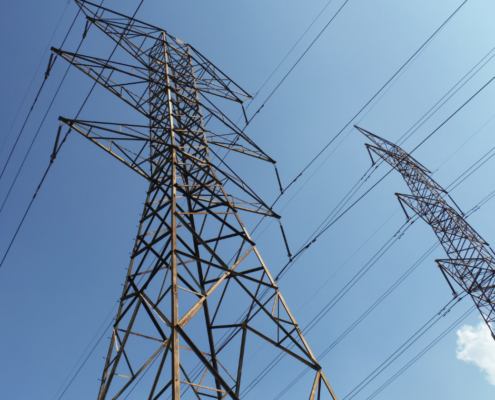Last Updated on July 27, 2022 by Mary Pressler
The Texas Electric Grid is Stable Thanks to Wind and Solar
Since the widespread blackouts caused by Winter Storm Uri in February 2021, the reliability of ERCOT’s grid has been questioned. There have been no major outages since then, but summer 2022 has brought scorching heat waves to Texas. ERCOT has asked consumers to reduce their consumption as a prevention measure on multiple occasions, raising concerns about rolling blackouts.
Managing a power grid is a technical challenge, and service interruptions are a last resort when the available generation cannot keep up with demand. The following are some unfavorable conditions that can force ERCOT to use rolling blackouts during summer, especially if they happen at the same time:
- Having simultaneous outages at multiple coal and gas power plants.
- Reduced generation from wind farms due to low-wind conditions.
- Reduced generation from solar panels due to cloudy weather.
- Excessive air conditioning load due to high outdoor temperatures.
Texas has drastically increased its renewable generation capacity since February 2021, and this has helped the grid keep up with consumption.
How Much Solar and Wind Capacity Did Texas Install in 2021?
According to the Solar Energy Industries Association (SEIA), Texas installed 6,060 MW of solar generation capacity in 2021, reaching a total capacity of 13,947 MW by Q1 2022. Texas now has enough solar power for 1,682,330 homes, and there is a growth potential of 18,401 MW for the next five years. In spite of recent growth, only 3.75% of Texas’ electricity comes from solar panels, which means the potential market is still huge.
Texas’ wind generation capacity is even higher: 38,000 MW according to the Powering Texas Alliance. Texas has more wind turbines than any other state, and the American Clean Power Association reports that 7,352 MW were installed in 2021 alone.
According to an IEEFA report, solar and wind farms generated 34% of ERCOT electricity in Q1 2022, which represents a new record for renewables in Texas.
- Electricity demand in the ERCOT region increased by 9% compared with Q1 2021, but wind and solar generation increased by 14% and 85% respectively.
- Renewable sources surpassed gas-fired generation, which accounted for 31.25% of electricity in Q1 2022.
ERCOT also provides a favorable growth forecast for energy storage technologies. Texas had 833 MW by the end of 2021, but the installed capacity could reach 5,000 MW by the end of 2022 and 6,500 MW by 2024.
July 20, 2022: ERCOT Demand Exceeds 80,000 MW for the First Time on Record
Texas has more generation capacity compared with summer 2021, but the ERCOT grid is also dealing with unprecedented demand levels. On July 20, grid demand reached a new record by surpassing 80,000 MW, exceeding ERCOT’s summer peak forecast of 77,000 MW. Texas was consuming more electricity than New York and California combined when the new record was reached.
- Renewable sources helped Texas during the 80,000 MW demand peak, by injecting almost 20,000 MW into the grid.
- This helped reduce the workload on coal, gas and nuclear power stations.
Solar power has played a fundamental role in Texas during the 2022 heat waves. Air conditioning load increases dramatically during hot sunny days, but this is also when solar panels can reach their maximum productivity. In other words, solar energy peaks tend to match with aircon consumption peaks, reducing the workload on other power plants. Texas deployed 6,060 MW of solar capacity in 2021, and those projects are now helping with summer demand.
How ERCOT is Dealing with Peak Demand in Summer 2022
ERCOT is investing around $1.5 billion in making the grid more reliable this year, according to an article by The Eagle. They are following two main strategies to improve resilience:
- Purchasing more power reserves.
- Creating an incentive for generators to increase production before grid conditions become critical.
The ERCOT emergency response budget, used to purchase electricity during extreme weather and other emergencies, has been increased by 50%. For example, ERCOT used funds from the emergency budget to purchase 3.5 hours of sustained power on July 13, when grid demand and supply were dangerously close.
The Public Utility Commission of Texas also reduced the maximum price of wholesale electricity from $9,000 to $5,000 per megawatt-hour (from $9 to $5 per kWh). The maximum price is now reached earlier at times of high demand, creating an incentive for generators to respond faster. With the previous maximum price of $9,000/MWh, many generators would wait until grid conditions were critical.
It’s important to note that not all power outages are rolling blackouts. Power outages can happen locally due to several reasons, such as having a power line damaged by harsh weather. Rolling blackouts cover much larger areas of Texas, and ERCOT announces them in multiple news outlets and social media. Generally, a local outage will be handled by the transmission and distribution utility (TDU) in charge, a municipal utility company, or an electric cooperative.











Leave a Reply
Want to join the discussion?Feel free to contribute!